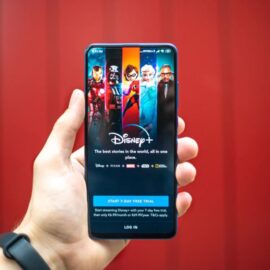

This article is an excerpt from the Shortform book guide to "Ca$hvertising" by Drew Eric Whitman. Shortform has the world's best summaries and analyses of books you should be reading.
Like this article? Sign up for a free trial here.
Want to know how to write advertising copy? If you’re just starting out, what are the most important things to know?
In his book Ca$hvertising, Drew Whitman presents a variety of his best techniques for creating money-making ads. According to him, there are four basic aspects to writing advertising copy that every writer should know how to do.
Read on to learn how to write advertising copy, according to Whitman’s four basic techniques.
Writing Advertising Copy
In Ca$hvertising, advertising coach Drew Whitman claims he can help you turn any mediocre ad into a money-making machine by letting you in on one big secret: Consumers are only drawn to ads that address their core human needs to survive and thrive. In his book, he offers advice on how to write advertising copy that convinces consumers to buy your product.
In this article, we’ll summarize Whitman’s four basic techniques for writing advertising copy: creating a well-defined marketing message, choosing the right copy length and frequency, posing questions, and using visuals in your ad copy.
#1: Make Your Message Clear, Specific, and Visual
To write advertising copy that sells, Whitman first insists that you make your ad copy clear and comprehensible, specific, and image-based. Let’s look at each of these qualities.
First, your message must be clear: Your audience must understand what your product does and how it will improve their lives, otherwise your ad will have failed at the most basic level to inform your customer about your product. Use simple, concise language, and always use the casual expression of an idea rather than one that sounds more intellectual. For instance, say: “This smart watch will track your health,” rather than: “This wearable tech device will record your physical fitness data.”
(Shortform note: While Whitman’s recommendation to be clear and comprehensible is likely the best approach for most ads, some products may benefit from intentional ambiguity in advertising. Ambiguity creates curiosity and arouses the viewer’s need for answers, making them more likely to seek out further information about the product. Such advertising works especially well in the social media age, where internet users can fuel viral curiosity about a product by talking about it on social platforms.)
Second, specific words and figures are more compelling than vague expressions, so always opt for specificity when possible. You might thus write: “Sell last year’s clothes you’re bored of for up to $100 per item,” rather than, “Sell clothes online.”
(Shortform note: Being specific in your ads may have the additional ethical benefit of forcing you to be completely honest about your product. If you’re specific, you can’t mislead readers with appealing yet vague promises that end up only being half-true. And transparency in ads builds trust in your brand, which benefits your bottom line.)
Finally, you should create vivid images through your writing because when humans are prompted to have an internal experience of something, that experience occupies their thoughts more and thus influences their buying decisions more. You can do this by using strong adjectives and speaking to all five senses, not just sight. Don’t be afraid to be extremely vivid and even dramatic—this will make you stand out from the competition.
(Shortform note: If you’re struggling to write vivid imagery in your advertising copy, it might be worth considering what modality readers will consume your copy through. A modality, according to Tony Robbins in Awaken the Giant Within, is a sense that gives you the most vivid experience, and different people have different modalities, or senses that they favor. Think about what your product does and what modality users of that product might favor—for example, if you’re advertising a candle store, your customers will likely favor smell over movement. Then, write to that modality by using language that’s specific to it: “Our smartwatch will get you sweating,” or “Our candles will bathe you in aromatic bliss.”)
#2: Maximize Your Visibility Through Size, Frequency, and Length of Copy
Whitman believes you must get your ads in front of as many readers as possible by making ads big, frequent, and long. When writing advertising copy, keep in mind that Whitman says bigger ads garner more attention than small ads, so make your ad as big as you can afford.
Additionally, running ads frequently helps customers get used to your brand, accept it, and feel aligned with it, writes Whitman. Still, don’t overrun the same ad because excessive exposure can make audiences start to feel negatively about your brand and product. Instead, run similar yet slightly different ads that give the audience variety and slightly different arguments in favor of your product.
Finally, write long advertising copy because humans associate length and detail of a text with credibility. When an ad has lots of copy and contains many facts, testimonials, or stats, readers believe the ad is credible and the product therefore good.
| Do the Rules of Size, Frequency, and Length Apply to Digital Advertising? Whitman’s recommendations to make ads big, long, and appear frequently may well work for print advertising, but do these suggestions apply to digital advertising? The answer is likely that it depends on the type of digital advertising. There are six types: display ads, social media ads, native ads, search engine ads, video ads, and email marketing. Many consider search engine marketing to be the most effective of these; this is when a search engine result appears on, for instance, the top of a Google search page (with a note that it’s an ad). But in such ads, you’re severely limited in size and scope of what you can write. You might make your ad relatively longer than other search engine ads, but you’re still limited to only a few lines of copy. So your ad can’t be particularly large or copy-heavy. However, you can and should run ads frequently. It’s particularly useful to run slightly different ads in digital marketing, not just so you don’t bore customers, but also so you can compare the effectiveness of the ads against each other. |
#3: Pose Questions in Your Copy to Get Readers Thinking
To write effective advertising copy, Whitman says you should use questions, including rhetorical questions, to prompt audiences to think about your product more than they might otherwise. Rhetorical questions aren’t always effective as selling tools, and some feel they never reliably work. However, Whitman contends that rhetorical questions can encourage audiences to simply spend an additional moment thinking about your product, thus cementing its place in their minds. Literal questions can also make readers want to know the answer to the question and continue reading to find it.
For instance, if you ask the rhetorical question, “Wouldn’t life be better with a bag of Mandy’s BBQ chips?” you prompt your audience to reflect on this question, making them think about your brand for a moment longer, and hopefully helping them recall it when they’re in a buying situation. If you conversely ask a literal question, like: “Do you know what peoples’ favorite chip flavor is?” the reader will want to know the answer and keep reading.
| Other Types of Questions to Include in Your Copy Whitman mentions two types of questions to use when writing advertising copy: rhetorical and literal. However, there are other types of questions you can pose to hook your reader. There can be overlap between some of these question types, so you may also consider combining several types into one question. The other question types are: Open-ended questions: These are questions that demand the customer consider a hypothetical situation or reflect on their feelings about something. An open-ended question might begin with: “Imagine you’re…” You should only use these sparingly because you risk losing the reader’s attention. Yes or No questions: These are questions that seek to affirm that a reader is following you and adds emphasis to your point. Often, yes or no questions are also rhetorical (“You want to look youthful and vibrant, right?”). A good way to ensure that rhetorical questions are as effective as possible is to keep them simple and be conscious of what stage of buying your customers are in (discussed in an earlier section). For example, if you’re writing an ad that seeks to simply get customers to consider buying your skincare product, pose the question: “Wouldn’t it be nice to look ten years younger?” not: “Want to target stubborn crows feet?” The latter question is geared toward people who are already avid skincare users. |
#4: Use Visuals to Your Advantage
Whitman’s final suggestion for writing advertising copy includes how to use visuals to boost the success of your copy. Specifically, this means having a professional designer do your layout, favoring what’s known as an Ogilvy layout, and using many photos of people.
Whitman warns that attempting to create an ad layout by yourself can lead to an unappealing ad that loses sales. It’s always better to ask a professional who knows design strategies and best practices to do this for you. However, you should consider asking the designer to use an Ogilvy layout (made famous by David Ogilvy, the “father of advertising”): an ad with a photo in the top two-thirds of the page, a headline beneath this, and finally the ad copy, which starts with a drop cap (an especially large first letter). The photo should be of people because humans are naturally drawn to images of other humans.
(Shortform note: In Ogilvy on Advertising, David Ogilvy himself elaborates on guidelines for his proposed layout. First, he says that the photo you choose should suggest a story that piques the reader’s curiosity. Ideally, your photo should only feature a single person because readers prefer images of individuals over images of groups. Second, the reason you should separate image and text is that text laid over images can be difficult to read. And third, a drop-cap can increase readership by 13%, he claims. Considering the specificity of these recommendations, it’s no wonder Whitman recommends hiring a professional to execute them.)

———End of Preview———
Like what you just read? Read the rest of the world's best book summary and analysis of Drew Eric Whitman's "Ca$hvertising" at Shortform.
Here's what you'll find in our full Ca$hvertising summary:
- How to turn your mediocre ads into money-making machines
- 13 techniques to create compelling ads that address customers' needs
- Why fear is a strong motivator that increases sales






